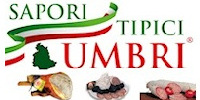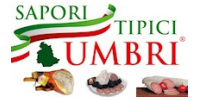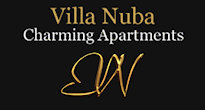Our network:
Thursday 25 December 2025
Etruscan town walls
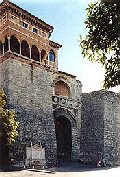 |
| Etruscan Arch |
Between the 6th and 3rd centuries BC Perugia was fortified by massive town walls in travertine blocks that followed the hilly ground around the city and are still largely visible today, particularly to the west and north. Seven gates, of which six still exist although they were partly modified by the Romans and in the Middle Ages, allowed access into town.
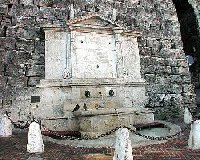 |
| Fountain - Etruscan Arch |
To the north is the main gate into the city, the Arco Etrusco (also called Arco di Augusto). Built in the 3rd century BC, the trapeze-shaped dungeons on either side make this an imposing structure.
Beneath the Doric frieze there are two Latin inscriptions. The first, "AUGUSTA PERUSIA" (1st century BC) commemorates the city's reconciliation with Octavian, who had distroyed Perugia in 40 BC following a seven-month siege during the
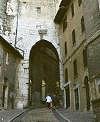 |
| Porta S. Ercolano [Porta Cornea] |
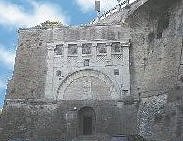 |
| Porta Marzia |
Etruscan Arch (Piazza Grimana), Porta Marzia (Rocca Paolina - Piazza Italia), Porta Sant'Ercolano (Via Oberdan), Arco della Mandorla (Via San Giacomo), Porta Trasimena (Via dei Priori), Arco dei Gigli (Via Bontempi)
[old town centre]
Perugia, 06122
APM (Public municipal bus transport authority): stopped bus - Piazza Italia [min. 100 meters - max 800 meters away for every monument]
Linea 4, 6, 7, 9, 10, 11, 12, 13s, 13d, 15, 81, 82, 83, 87, bis28, bis33, bis34, bis41, bis44
Disabled access available
[old town centre]
Perugia, 06122
APM (Public municipal bus transport authority): stopped bus - Piazza Italia [min. 100 meters - max 800 meters away for every monument]
Linea 4, 6, 7, 9, 10, 11, 12, 13s, 13d, 15, 81, 82, 83, 87, bis28, bis33, bis34, bis41, bis44
Disabled access available
| Have a comment or question? Send a message to our editors at: contactus@perugiaonline.com |
| Up |

General information
• General travel tips • Weather information
• Tourist guides and visit guided in Umbria
• Local opening times
• Useful - emergency numbers
• Perugia for living
• Hospital Perugia
• Hospital Foligno
• Real Estates and Home Builders
• Homes for sale, property, apartments selling
Transport in town
• Traffic restrictions • Parking
• Buses & Taxis
• Town map
• How to reach Perugia by car
• How to reach Perugia by train
• How to reach Perugia by Air
Transport out of town
• Airport • Trains
• Rent a car
• Local and national buses

Where to Stay
• Hotels Map
OFFERS & LAST MINUTE
Where to eat and drink
• Restaurants and Trattorie • Pizzerie
• Pubs
• Restaurants Map
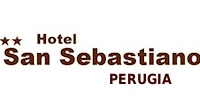
Art and monuments
• Rocca Paolina • Ipogeo dei Volumni
• Etruscan town walls
• Palazzo dei Priori
• Porta Sant' Angelo
• Acqueduct
• Maesta delle Volte
• Collegio della Mercanzia
• Collegio del Cambio
• Fontana Maggiore
Art and religion
• Cathedral of San Lorenzo • Church of San Filippo Neri
• Oratory of San Bernardino
• Church of Sant' Ercolano
• Church of San Domenico
• Church of San Pietro

Museums and galleries
• Historic Museum Perugina • Galleria Nazionale dell'Umbria
• Museo Archeologico
• Palazzo della Penna
• Accademia delle Belle Arti
• Museo di Storia Naturale
• Museo Capitolare San Lorenzo
• Cappella di San Severo
Art and tourist attractions
• Palazzo Capitano del Popolo • Botanical garden
Perugia News
Sorry, non news - i soggetti interessati a far conoscere le iniziative che avranno luogo nell'ambito del territorio comunale sono invitati a darne comunicazione con congruo anticipo utilizzando l'email redazione@umbriaonline.com
Regional News by Category
• MUSIC • EXHIBITIONS • COURSES • COMPETITIONS & PRIZES • FOLKLORE • EVENTS • DANCE & BALLET • MEETING & CONFERENCES • CONGRESS • KIDS • Typical Products FAIRS • THEATRE • SPORT EVENTS • LEISURE • LIFESTYLE • WHERE TO DINNER • NIGHTLIFE • CURIOSITY • VIDEO • BOOKS
What to see & do
• Itineraries & Museums in Umbria • Italian language courses
• The Amusement Park : La Citta della Domenica
• Golfing holidays
• Nature Walks Around Cascia:To Cascia via the Scoglio di Santa Rita, the vast rocky pyramid that dominates the village of Roccaporena
• Cooking courses
• Shopping in Perugia
• Perugia Hotel Tevere
• Assisi Villa Giulia
Lake Trasimeno
• General Information • The islands - boat tours
• Eating well by Lake Trasimene
• Bathing - Lake Trasimene
• Restaurants Map of Trasimeno area
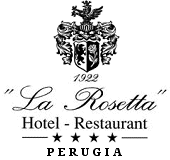
SPECIALS in Umbria - Italy
• Gift Ideas for traveling • Wellness in Umbria - Perugia area
• Weddings in Umbria
• Honeymooning in Umbria
• Charme & Relax in Umbria
• Home in Umbria
Education
• Language schools for Foreigners • Cooking schools
• University for Foreigners Perugia
• Design, Fashion, Visual arts and Communication Schools
• Perugia for Studying
• University
• Italian Army Foreign Language School
• Arts, Music, etc.
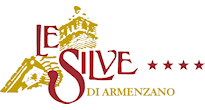
Typical products
• Norcia Ham IGP • Handicraft
• Mushrooms
• Truffles
• Extra Virgin Olive Oil
• Wine
• Meat
Flavours to taste
• Salumi Tipici Italiani online selling • Oleum Evo online selling
• Sapori Tipici Italiani buy now
• From the forest
